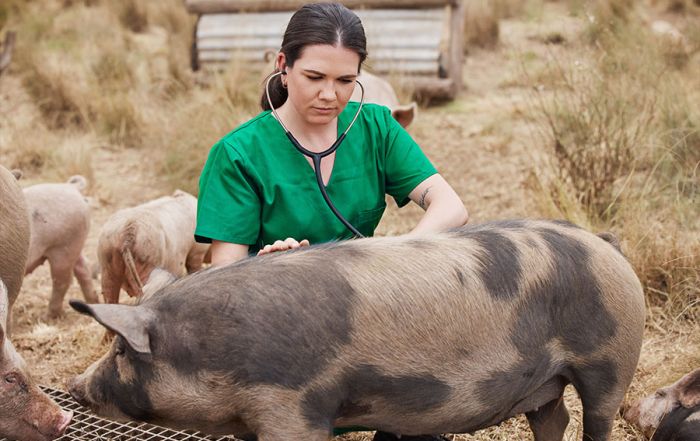Understanding Food Contamination in Foodservice Operations
Within this blog, I’ve provided a lot of details about the finer points of food safety – from making sure your kitchen staff is trained, to detail about various foodborne pathogens. What I have never done, at least that I can recall, is discuss how food contamination occurs. So, I thought we might explore how food in foodservice operations can become contaminated and what measures staff can take to better ensure the product they serve is safe.
One of the most important things to consider is from whom the foodservice operator sources their food. If ingredients are not sourced from reputable suppliers or if they are past their expiration dates, they can pose a serious food safety risk. In most cases, once the food is accepted into your operation, you cannot make the food any safer. Sure, you could cook ground beef to the proper temperature to eradicate E. Coli or other foodborne pathogens. But the cross-contamination risk is extremely high. For other products though, there is no “kill step” involved in the production of it. Take produce for example. In the past 10 years alone, we’ve seen deadly outbreaks related to Romaine and other types of leaf lettuce, cantaloups, peaches, plums, and nectarines, just to name a few. Many times, when these are served, no cooking step is involved. Thus, foodservice managers must prioritize sourcing fresh, high-quality ingredients and conducting regular inspections of their supplies.
Another common source of contamination is cross-contamination during production. Cross-contamination accounted for approximately 18% of retail food-related outbreaks from 2017 through 2019. This occurs when pathogens from raw foods, such as meat, poultry, or seafood, come into contact with ready-to-eat foods, such as lettuce that will be used in a salad, or bread that will be used on a cold cut sandwich. When I visit with staff in schools and restaurants, almost all of them say this would never happen in my school or my restaurant. But the statistics show that it does happen, and it happens more than we’d like to think.
41% of outbreaks from retail food establishments were the result of an ill worker not following proper food safety practices.
Improper storage and temperature control is another area of concern. Perishable foods must be stored at the correct temperatures to prevent bacterial growth. If refrigerators or freezers in the kitchen are not maintained at the recommended temperatures, bacteria can quickly proliferate and become unsafe relatively quickly. Just as important is making sure your cooler and freezers are organized properly. If you need some help in determining the best way to organize it, check out our refrigeration storage food placement resource – the best part is that the resource is free!
The personal hygiene of staff is also a common cause of contamination. Failure to wash hands thoroughly, wearing dirty uniforms, or coming to work while ill can all contribute to the spread of foodborne pathogens. From 2017 through 2019, 41% of outbreaks from retail food establishments were the result of an ill worker not following proper food safety practices. This includes failing to minimize bare hand contact with ready-to-eat foods, not using gloves, or working while ill. It’s essential for foodservice employees to follow all practices that they learn in food safety training – and it is vital that management reinforces those practices within the operation.
What can you do as a manager or leader in foodservice operations to minimize common points of contamination? First, be sure your staff is trained in food safety. My research in food safety has focused on the fact that food safety training alone does not usually change employee behavior while on-the-job. The simple fact is that employees cannot practice proper food safety practices if they are not even aware of what those proper practices are.
Training is the first step, but be sure to follow up that training with a culture within your organization that supports proper food safety practices. When we talk about “culture” in a microbiological setting, it is the method of growing an organism. We want a similar culture in our organization, but we want to grow a supportive environment related to food safety. Nothing is so important that it cannot be done in a safe manner and the ability to hold each other accountable for lapses in food safety is an important step in developing that culture within your organization but requires a certain level of trust among all employees and managers to be effective.
Conduct regular inspections within the facility. Sure, you can look for employee practices, but if you have a good food safety culture, employees will help monitor each other. You want to focus on the facilities, equipment, and storage areas to ensure compliance with food safety standards. Are your SOPs keeping facility cleanliness, maintenance, and organization in-check or should you revisit those SOPs to improve these? Remember, you can’t be everywhere at all times, and you must have a good system to delegate these responsibilities to other managers or team members in order for them to be effective and long-lasting.
Last, but certainly not least, communication with suppliers is important. Be sure they know what you expect of them and ensure they are providing the quality and safety of ingredients that you demand and deserve.
While dining out can be a pleasurable experience for your customers, it’s essential to be aware of the potential for food contamination and to alleviate those issues before they become a foodborne illness for customers. By understanding the common causes of contamination and implementing strict food safety measures, you can protect yourself, your employees, your business, and most importantly, your customers. Risk Nothing.
Never Did I Ever…
Yes, I know the real game is “never have I ever”, but that phrase didn’t work [...]
Understanding Food Contamination in Foodservice Operations
Within this blog, I’ve provided a lot of details about the finer points of food safety [...]
The Antibiotic Debate in Our Food Chain
The discovery of antibiotics in medical science is regarded as one of the most important medical [...]
Exposing the Risks of Raw Milk
When I began my career in the food safety area several years ago, I never dreamed [...]









